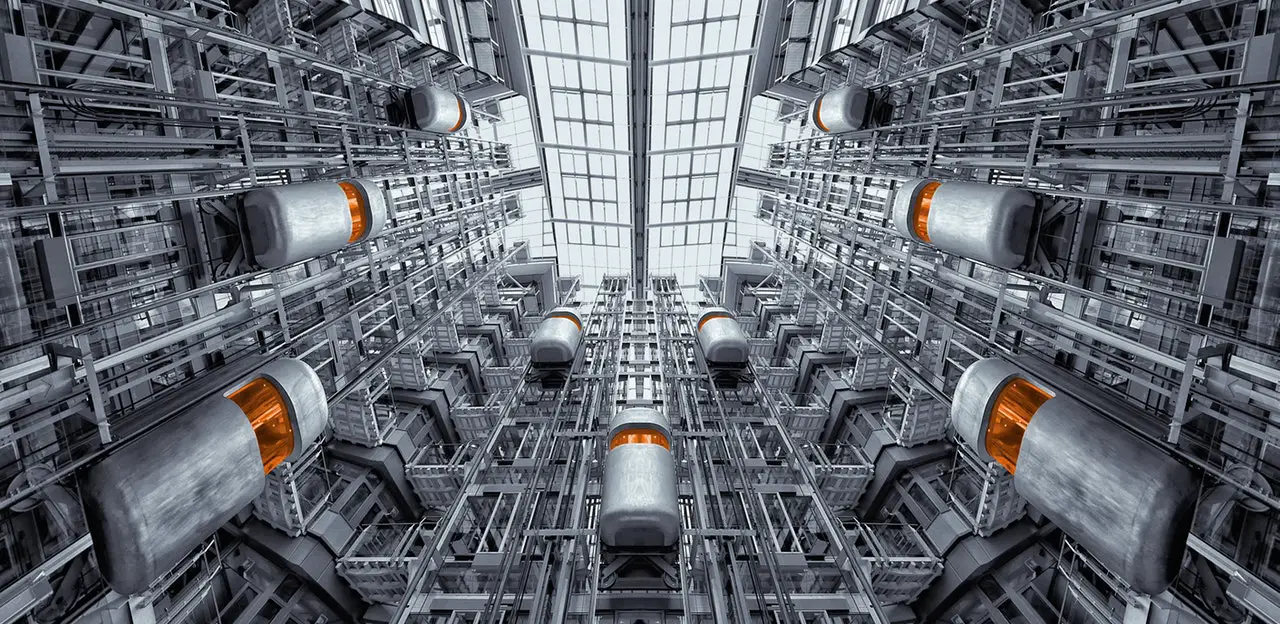
How would you feel stepping into a lift powered entirely by magnets? No cables, no pulleys, and nothing but a magnetic field to keep the elevator suspended. It’s enough to make your stomach turn. But magnetic lifts could soon become a reality, with German lift manufacturer Thyssenkrupp developing the world’s first non-cabled Multi elevator system.
The company recently rolled out the technology for the first time in a purpose-built innovation test tower in Rottweil, Germany. This has raised excitement levels over the potential of this technology, with various Multi systems set to be installed in the new East Side Tower building in Berlin, opening in 2019. Using magnetic levitation (maglev) technology, the full development of Thyssenkrupp’s Multi elevators would be a huge advancement in a technology barely altered since the 19th century.
How do magnetic lifts work?
Instead of being attached to ropes and pulleys, magnetic lifts ascend up and across shafts that have embedded electromagnetic fields, known as linear drives. A magnetized coil running along these shafts repels magnets located in the elevator cabin, causing it to levitate just above the shafts. The shafts are capable of rotation, allowing lifts to move horizontally, instead of only being able to move up or down, akin to the elevators in Charlie and the Chocolate Factory (minus the flying capabilities).
Unlike traditional cable lifts where only one elevator can use a shaft, multiple magnetic elevators can use the same shaft. These cabins can then operate on a loop around a building, somewhat like a metro system.
The magnetic technology allows elevators to move freely and out of the way of cabins in the same shaft, meaning they are far more flexible than cable elevators. The software will be used to control the movement of these lifts, with planned routes for each of the cabins to optimize traffic levels and journey duration. Maglev technology has already been successfully tested out in Japan’s bullet trains, which can reach speeds of up to 375 miles per hour.
What does this mean for building design?
The Multi elevators can substantially increase a building’s transport capacity. This has the effect of cutting waiting time for passengers, with new elevators arriving every 15-30 seconds, even though the new elevators are not actually faster than traditional lifts. While maglev elevators will cost significantly more than traditional cabled systems, building developers are ultimately very likely to save money. They will not need to build as many elevator shafts as they did before, as cabins are half the size of conventional elevators, and the new technology facilitates multiple elevators within one shaft.
This gives developers significantly more latitude when designing buildings. With traditional elevators costing a building up to 40% of valuable floor space, the substantial space saved by these elevators allow for focus on other aspects of a building. It also means that developers do not have to account for elevator shafts as one of the main elements of a building’s interior, as the lifts can easily run on the outside. Developers will be able to build different shapes and configurations of buildings that they have never previously been able to.
The Multi lifts will also make it easier to build taller buildings. Currently, cable designs can only safely rise around 1,600 feet in one continuous ascent, meaning numerous lift shafts must be in installed in taller buildings to allow people to reach the top. As lift installation company Premier Lift Group note in their article on luxury lifts in skyscrapers, many companies are worried about being able to cope with the rise of ‘megatall buildings’, with the increasing number of skyscrapers being developed in major cities in recent years. As there are no restrictions on the ascent that magnetic elevators can make, the development of this technology could not have come at a better time.
How safe are magnetic elevators?
The absence of lift cabling raises several questions regarding the safety of magnetic lifts, but the wellbeing of passengers is ensured in several ways. Firstly, like Thyssenkrupp’s twin elevator system, a cabin’s multi-propulsion system will allow its set route to be controlled by software, meaning there should be no diversions from these predetermined journeys.
Software will also monitor the space between each cabin, meaning if two cabins ever did get too close, the cabins would automatically decelerate and come to a halt at a safe distance apart. There will be an emergency braking system that runs on a completely different system, just in case, which will also stop elevators in the event of a power cut.
The advent of Thyssenkrupp’s Multi elevators goes beyond merely making our lives more convenient but could seriously aid building developers in more easily constructing larger and more cost-effective buildings. This development could represent a seminal moment in modern technology.










